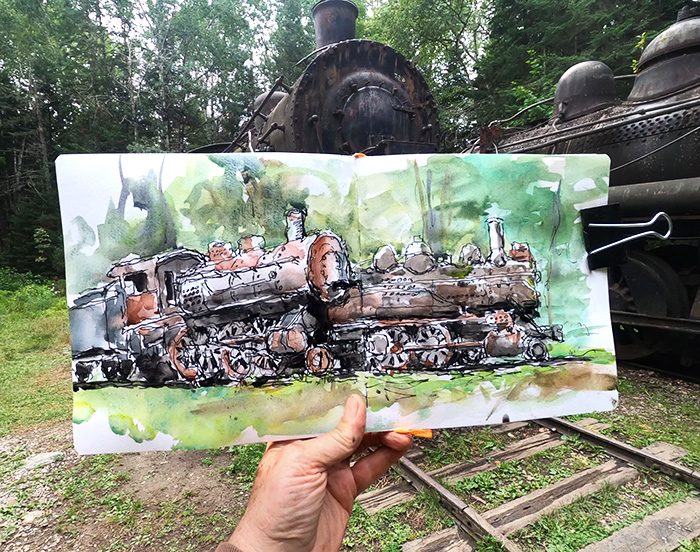
I am a fan of old trains, so in late July I went on a sketch adventure to the abandoned locomotives of the Allagash wilderness. Deep in Maine’s North Woods sit two rusting 100-ton steam engines, remnants of the lumber industry that once supplied twenty percent of America’s paper. These reminders of the Industrial Revolution are a bonanza for railway buffs and sketchers, but getting there is a challenge.
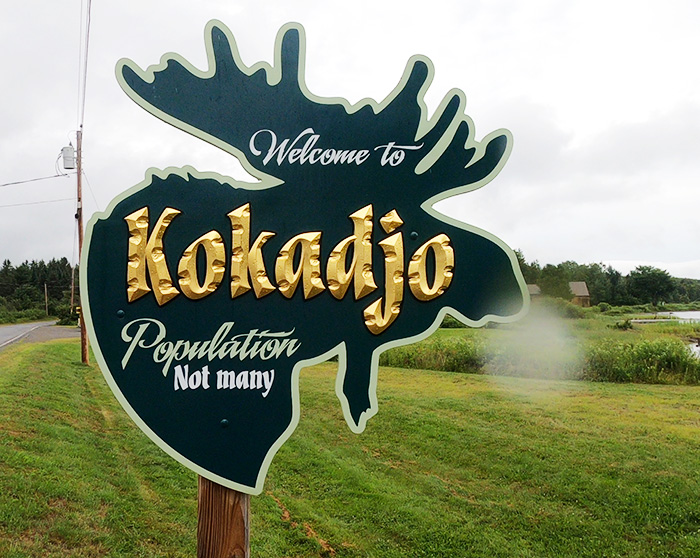
I started my journey from the town of Greenville which sits on the south end of Moosehead Lake, and is considered the gateway to the Allagash. I had planned to leave at dawn but there was a huge downpour and my departure was delayed. During the wait I anxiously watched the skies hoping I didn’t have to cancel the 90-mile drive over logging roads. But the rain let up and at 9:00 AM I took off in my rented SUV, passing through the town of Kokadjo where the pavement and cell phone service ended.
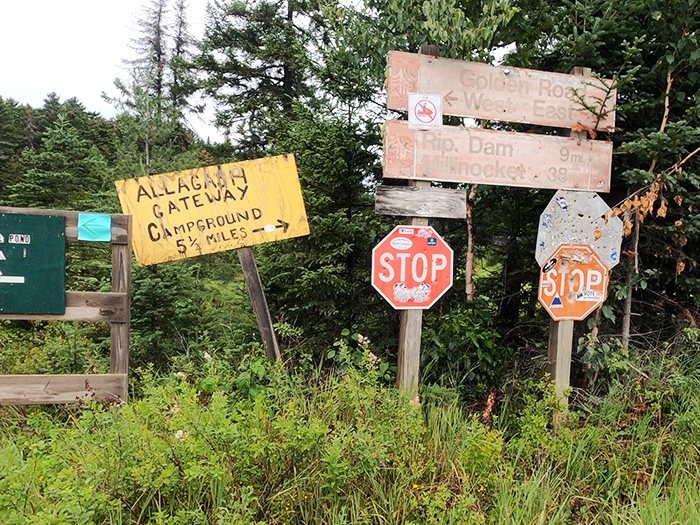
The logging roads were at times slippery with mud and consistently pocked with potholes, and I maintained a speed between 20 and 30 MPH hoping I didn’t get a flat. They were basically unmarked, and the GPS had ceased with the cell phone service, so I relied on directions I had downloaded and printed from the internet and the Delorme Gazetteer which is the bible of Maine roads. A few times I flagged down truckers to make sure I hadn’t taken any wrong turns.
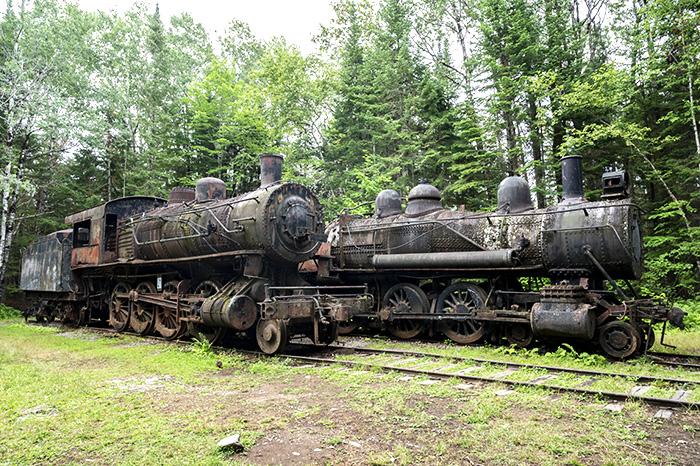
After four and a half hours of driving I came to the parking lot that serves as the trailhead to the locomotives – a two-mile trek through forest that was muddy from the morning rains. Rusting train tracks showed me that the locomotives were close, and when the trees gave way to a small clearing, the awesome appearance of the hulking engines was breathtaking. It was easy to imagine the noise and smoke that these engines once made and walking around them was like entering another world.
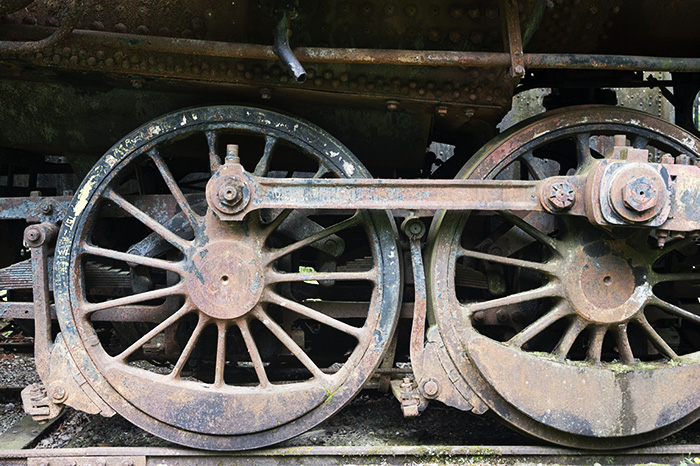
The locomotives were brought to the Allagash by the Great Northern Paper company as part of the Eagle Lake and West Branch Railroad, and in the 1920’s hauled thousands of tons of pulpwood. When the Great Depression hit the logging industry it was easier to abandon the engines rather than transport them elsewhere. Exposed to the elements for nearly 100 years, these rusting locomotives were a sketcher’s dream, their cold blue steel yielding to warm colors of rust and the greens of lichen and mould.
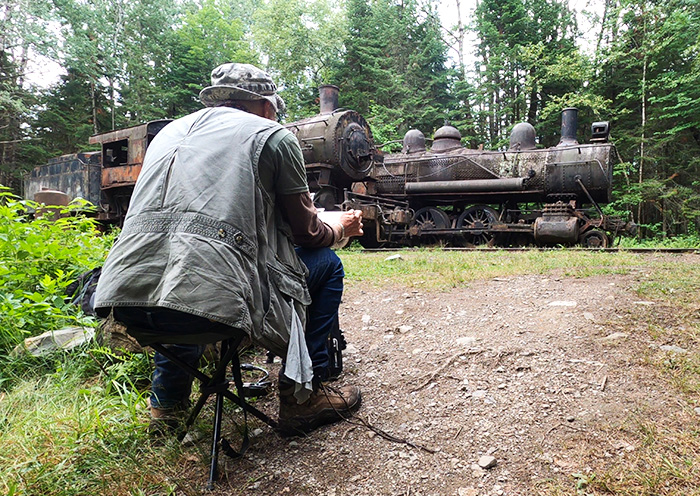
I needed to work quickly because of the late hour, so I set up my easel and went straight to fountain pen, using my favorite Noodlers Triple Tail Flex loaded with Platinum Carbon ink from Japan. This pen has two ink channels that give crisp, expressive lines that vary greatly in width depending on pressure. The Platinum Carbon ink is completely bulletproof, which refers to its insolubility once it dries making it ideal for line and wash sketches. I used a Hand Book hard cover sketchbook with durable paper made by Global Arts, and my watercolors were Kremer pigments in full pans.
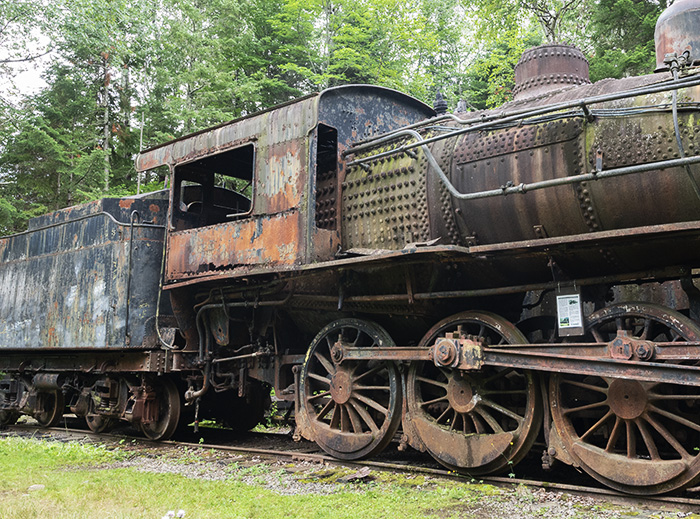
Despite the fact that I had doused myself in repellant, mosquitoes swarmed my fingers. Luckily I had a pandemic mask in my pocket that was useful for protecting my face. Not wanting to get stranded on logging roads in the dark, I sketched as fast as I could. Satisfied with my sketch, I hiked back to my car and started the long drive back to my motel.
* * * * * * * * * * * * * *
Related posts:
Sketching on the Subway and the Disappearance of Time
A Train Graveyard in Thorndike, Maine
An Abandoned Psychiatric Hospital in Tuscany
Childhood Dreams Under the Pulaski Skyway
Manhattan After the Hurricane
Photographing Letchworth Village
Returning to Cow Canyon Trading Post
More Vanished Signs of New York
The Meatpacking District Before the High Line

pbonvx
560lcs
Dear Jeff: You missed the real old winter, wood-fired engine located near the fifth Musquecook Lake which is located in the wilderness about ten miles southeast of Chamberland Lake. You may be lucky and find it close to an abandoned logging road in that area. I and two others were timber cruising(52&54) for the Great Northern in that area when we ran into this huge Monster with Tracks in the rear and cast iron (steel?) skis for steering in the front. I told my father about it. Later he went in there with a horse and took one of the doors from the firebox. He brought it up to his summer home and used it for a safe Fire Pit. My father was superintendent of timberlands for more than 40 yrs for both IP & GNP. To bad he’s passed away now. In those days, We had no camera/phone… just a compass. We worked alone in the wilderness; one carrying an “Old Town”* cannoue, another the food “Bisquick” (trout was plentiful), a third the maps, instruments, and data collection. Should you drop by to see me, I’ll try to point out the site on your map. Heavy lumbering was done in this area over the years and road traffic is usually prevalent in cut-over areas after the cutting is finished. My niece (DEANNA) is a Maine licensed guide and quite familiar with the area of the Allagash River. She lives at the mouth of the Allagash.
* “WHITE” cannoues were preferred because they could carry much bigger loads through shallow waters and much better over lakes but they were much heavier to Lug when empty. Only used them at landings where a truck could back up close to facilitate loading people, supplies, or equipment.
Thank you Maurice for this note! Sounds like its worth a trip to go back to find this engine!
Hello Maurice,
I was into 5th Musquecook last fall. We found the old logging camp site. (still quite a clearing there) Other than just a few bits and pieces (sled iron and some misc. Lombard parts) there isn’t much left. No sign of the boiler etc.
With that said we have an operating Lombard steam log hauler at the Maine Forest & Logging Museum which we run every know and again.
Jeffery, in regards to your write-up the locomotives and the railroad were not owned by great Northern Paper they were owned and moved to the site by Edouard Lacroix.
Terry, thank you for the correction and the comment! The info I got was all from the internet which as you know is not always reliable. I didn’t know about your museum and I hope to come by this summer!!